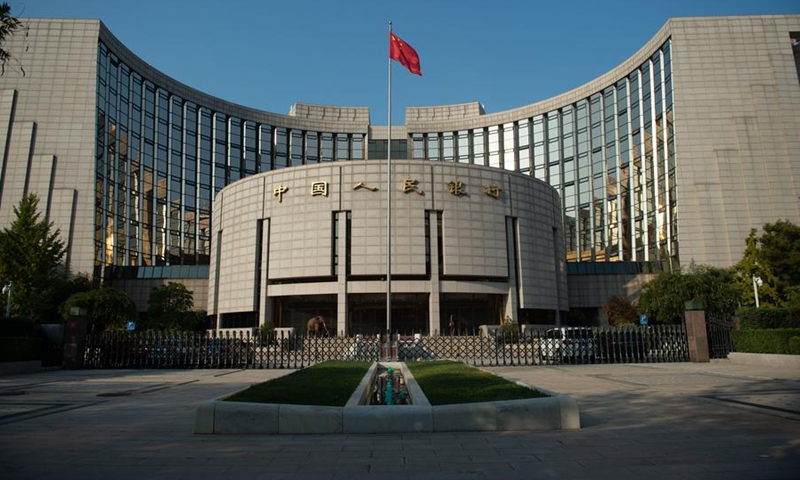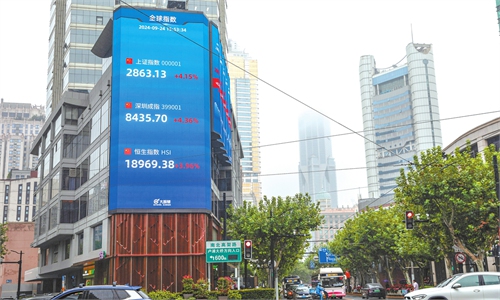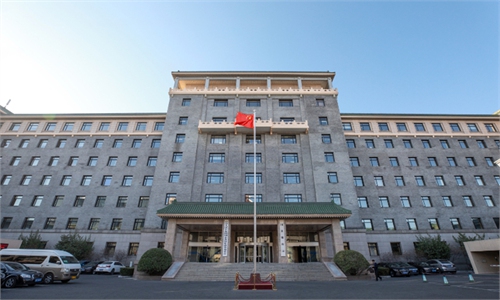China's central bank cuts RRR by 50 basis points to strengthen market confidence
Stimulus package to strengthen market confidence: analysts

File photo shows an exterior view of the People's Bank of China in Beijing, capital of China. (Photo: Xinhua)
The People's Bank of China (PBC), the country's central bank, announced on Friday a cut of 50 basis points (bps) in the reserve requirement ratio (RRR), effective Friday. The cut will lower the weighted average RRR for financial institutions to about 6.6 percent, while banks that previously implemented a 5 percent RRR will not be involved.
Experts said that the reduction is an important manifestation of China's supportive monetary policy, which will continue to boost market confidence.
The RRR cut was first announced by PBC Governor Pan Gongsheng, among a raft of other significant policy support measures, at a press conference on Tuesday, which analysts said will further promote stable economic growth.
This move is part of China's recent monetary stimulus package, which also included measures to support the property sector and capital markets to boost the country's high-quality economic development. The package was unveiled by China's central bank and the top securities and financial regulators on Tuesday at a press conference.
"The RRR cut by 50 basis points is expected to inject approximately 1 trillion yuan ($141.81 billion) worth of long-term liquidity into the financial market," said Pan, who added that another cut of 25 to 50 bps may be implemented by the end of the year, depending on conditions.
The prompt RRR cut sends a positive policy signal to the market and society, boosting confidence and easing potential pressures in the market, Liu Tao, an economist at the Guangkai Chief Industry Research Institute, told the Global Times on Friday.
"The RRR cut is expected to provide approximately 1 trillion yuan in long-term liquidity to the financial market, boosting the overall credit supply and ensuring sufficient market liquidity," Liu.
The cut will also improve the liability situation of the banking system, so that banks can better provide financing for the real economy, especially small, medium- and micro-sized enterprises and private enterprises, said Liu.
On Friday, the PBC also reduced the seven-day reverse repo rate from 1.7 percent to 1.5 percent.
The PBC adheres to a supportive monetary policy stance, intensifies the strength of monetary policy regulation, and enhances the precision of monetary policy control, in order to create a favorable monetary and financial environment for the stable growth and high-quality development of the Chinese economy, a PBC statement read on Friday.
Overall, the direction of policy easing is in line with expectations that China will gradually increase policy support in 2024, but the rate cut and RRR reduction were slightly larger than expected, Wang Tao, UBS chief China economist and head of Asia Economics, wrote in a note sent to the Global Times after the Tuesday press conference.
"We continue to expect more effective fiscal support from the government to stabilize growth in the coming months," said Wang.



